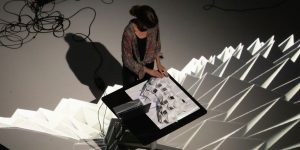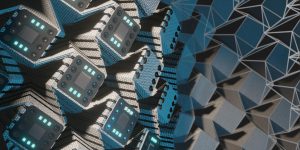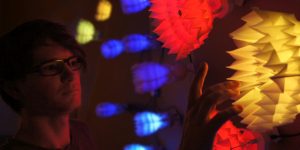folding
-

Oribotic Instruments
Klänge falten mit Origami-Robotik
Die Frage hinter unserer Arbeit, „Was passiert mit unserer Erfahrung im Raum, wenn wir Klang falten?“, ist in unserer Forschung zu grundlegenden künstlerischen Methoden für Origami und Robotik angesiedelt und folgt unserem zentralen Thema „Fold Sensing“.
-

Oribotic Instruments Workshop
Experimentelle Origami-Roboter-Musik
Was es braucht, um ein Roboter-Instrument aus einem Stück Papier herzustellen? Ein Workshop des Ars Electronica Futurelab war erst der Anfang einer völlig neuen Art von avantgardistischen Origami-Roboter-Performances.
-

ORI*BOTICS
Kunst und Forschung zu Origami-Robotik
ORI*BOTICS, the art and science of robotic origami, ist ein fortlaufendes Forschungsprojekt, das die Verbindung von Origami, Technologie und Natur untersucht. Es baut auf neuartigen Methoden des Designs und der Herstellung von starkem, flexiblem und höchst unregelmäßigem Origami aus Textilien und 3D-Druck auf, insbesondere Fold Printing und Fold Mapping.
-

ORI* – On the Aesthetics of Folding and Technology
This research examines how new design approaches that utilise advances in scientific origami, computation, robotics, and material experimentation, can influence the functional aesthetic of the art of oribotics. Situated in the context of contemporary electro/mechanical artworks and objects, and joining the fields of origami and robotics, oribotics is influenced by notions of folding scientifically and…
-

Oribotics
[the future unfolds]
In cooperation with the University of Linz’s Institute of Polymer Product Engineering, the Australian origami- and media artist Matthew Gardiner cultivated interactive flowerbeds. During the 2010 Ars Electronica Festival they brought the industrial architecture of the former tobacco processing plant into full bloom.